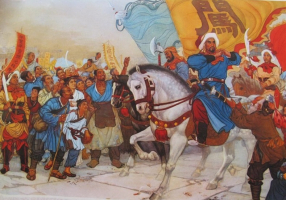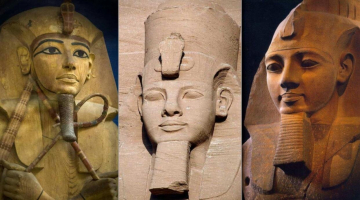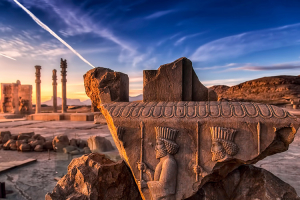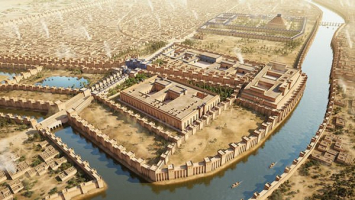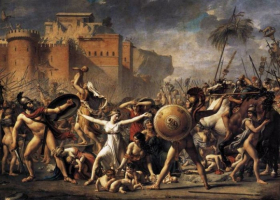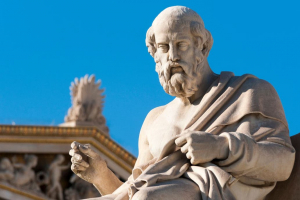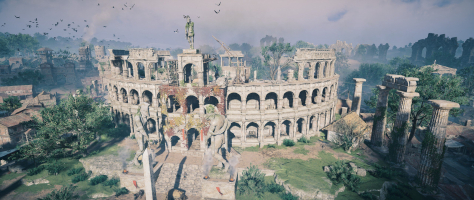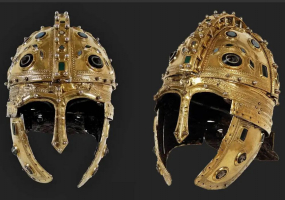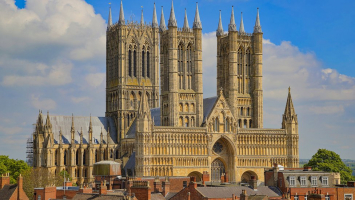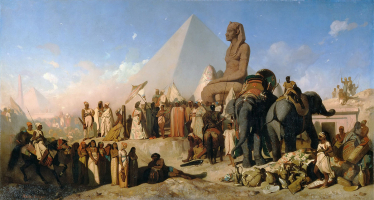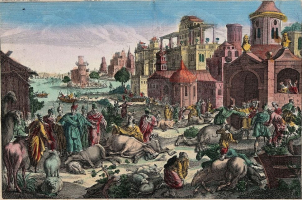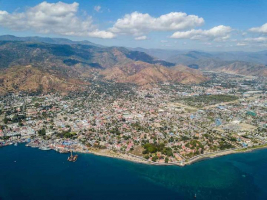Top 7 Most Important Events in Ancient Egypt
The first nomad settlements in the northern section of the Nile valley were made in 3100 BC, which is when ancient Egypt's history begins. The civilisation is ... read more...thought to have persisted for nearly 3,000 years, during which time there were numerous invasions. Here are the most important events in Ancient Egypt that you may not know.
-
An old Egyptian pharaohs' burial site is referred to as "Saqqara" in Arabic. This is why the Step Pyramid was constructed; it was the Pharaoh Djoser's tomb. It is the original Egyptian pyramid building.
The Step Pyramid was built under the supervision of Imhotep, a top official under Djoser who passed away in the 27th century BC. Six steps, or mastabas, are placed on top of one another and becoming smaller as they go up the design. It resembles a staircase made of pharaoh tombs that leads to the gates of heaven, to put it another way.
The pyramid was first shaped like a square mastaba before becoming a rectangular pyramid. The entire building mixes in with the perimeter wall. The base of the original design, according to archaeologists, spanned 109 x 125 meters and measured 62 meters. After completion, limestone was used to cover it.
A substantial wall surrounds the pyramid and creates a roomy courtyard with a carved entrance. The pharaoh's remains were interred in a sizable hall that was built on the south-eastern side. Also constructed were a few more structures for the pharaoh's use in the afterlife. A 40-meter trench that surrounds the entire structure served as additional defense. The passageways inside create a number of mazes that serve as a deterrent to tomb thieves. The Step Pyramid is recognized for its outstanding architecture and is a crucial component of Egyptian culture.
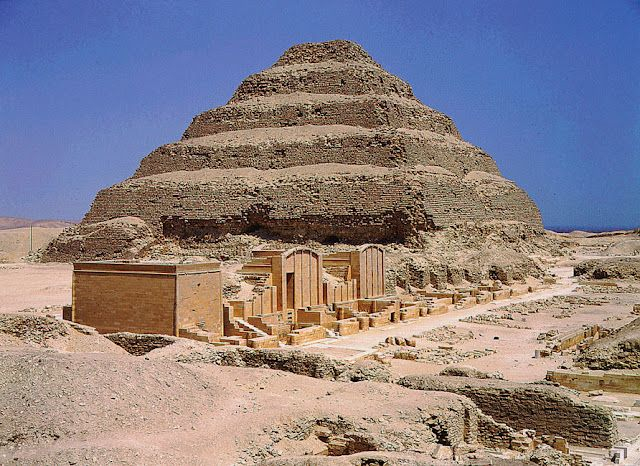
Photo: World History Encyclopedia - The Step Pyramid of Djoser at Saqqara 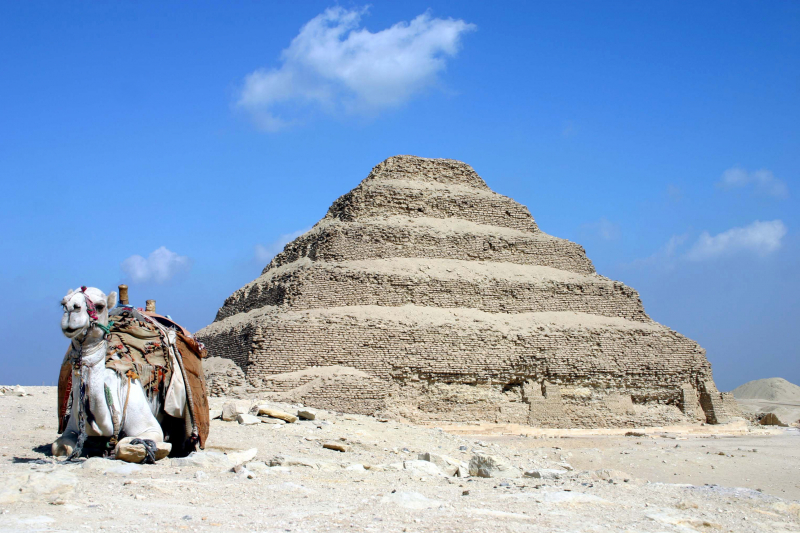
Photo: Wikimedia Commons - Saqqara pyramid -
The Pyramids of Giza were designed to last forever, and they have. The massive tombs, which date back to the Old Kingdom of Egypt, were built about 4,500 years ago.
The pharaohs of Egypt believed that they would live forever as gods. They built temples to the gods and enormous pyramid tombs for themselves as preparations for the afterlife, each containing everything a monarch would require to govern and survive in the afterlife.
Even today, scientists are unsure of how the pyramids were constructed since the ancient technical achievements at Giza were so astounding. However, they have gained a lot of knowledge about the people who created them and the political influence required to make it happen.
The builders resided in a makeshift city nearby and were talented, well-fed Egyptian laborers. Archaeological excavations at the interesting site have uncovered a well organized community with plenty of resources, which was likely supported by a powerful central government. It's possible that towns all throughout Egypt provided labor, food, and other necessities for what in some ways developed into a national effort to showcase the might and wealth of the ancient pharaohs.
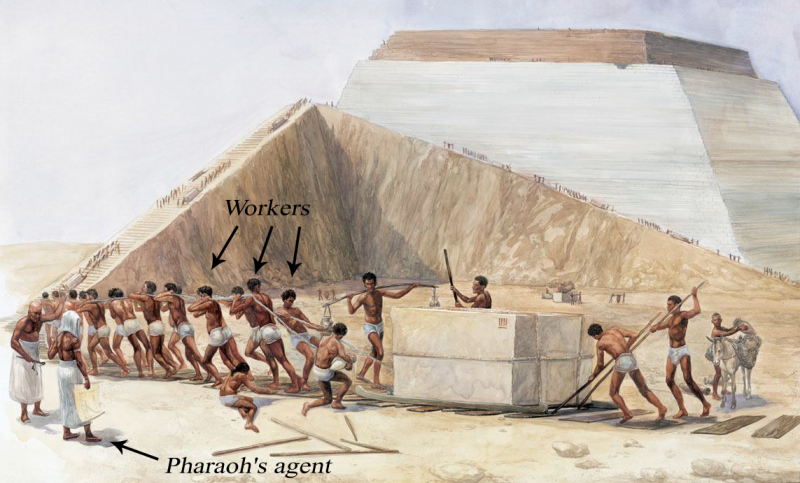
Photo: MathWorks - Giza Pyramids Construction 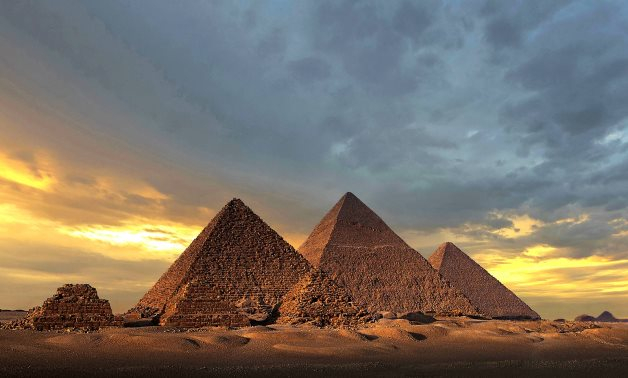
Photo: Egypt Today - Great Pyramids of Giza -
End of the Old Kingdom is one of the most important events in Ancient Egypt. This pivotal period in ancient Egypt's history saw the fall of a whole empire due to politics and corruption.
The term "Old Kingdom" refers to the time from the third to the sixth dynasty. Memphis served as the nation's capital at the period, and Pharaoh Unas presided over the state. The nomarchs, or officials, secured sovereignty over the core provinces, however, and gradually destroyed Unas in a startling rise of government.
Scholars generally agree that the last ruler of the 8th Dynasty, who reigned in Egypt between the middle of the 22nd century BCE or a few decades later, marked the end of the Old Kingdom. The causes of the fall can be attributed to prior internal and/or meteorological circumstances, as well as a possible invasion from the northeast—explanations that do not conflict with one another. These circumstances led to the dissolution of the Egyptian state's territorial entity, which was followed by a period of economic and cultural collapse. One of the most contentious issues in Egyptian history is the end of the Old Kingdom. Furthermore, the conclusion that the ancient Egyptians reported may not be the same as what current researchers have determined to be the conclusion.
Video: RosicrucianTV - The Old Kingdom: From our Egyptian Museum to you! Video: Mr. Corwin - Old Kingdom Egypt -
Numerous individuals died as a result of the Old Kingdom's collapse, and the population continued to drop for an additional 200 years into the First Intermediate Period. The cultural tenets established at the dawn of Egyptian civilisation and codified under the Old Kingdom were reinterpreted throughout this time, including the kingship ideology, social structure, religious practices, ideas regarding the afterlife, and interactions with surrounding peoples. Architecture, sculpture, art, relief decoration, stelae, jewelry, personal items, and literature all attest to these changes.
The Upper and Lower Egypt regions were divided by warfare during Egypt's civil war. However, the civil crusades came to an end in 2055 BC, and Upper Egypt triumphed. As a result, the regions were united, and Mentuhotep II began to rule as the new pharaoh of the 11th dynasty. Up until the 13th dynasty, when the pharaohs were viewed as less superior to the nomarchs, the country thrived.
The nomarchs had complete authority over the populace and established a strong administration supported by their wealth. The Middle Kingdom, however, was overthrown as their influence began to wane during the 12th dynasty.
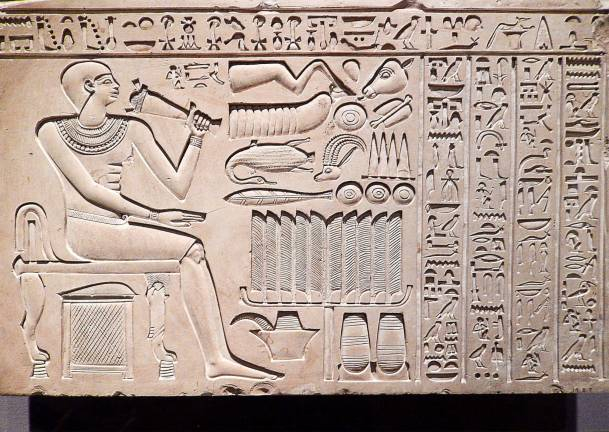
Photo: Metropolitan Museum of Art - Egypt in the Middle Kingdom Video: See U in History / Mythology - Middle Kingdom of Egypt -
The New Kingdom officially began during Ahmose of Thebes' rule. The population was prosperous and rich at this time, and they had access to all public amenities. The royal hierarchy included the 18th, 19th, and 20th dynasties. In reality, these dynasties produced some of the most powerful Egyptian pharaohs, such as Ramses II, Akhenaten, Tutankhamun, and Thutmose III.
The Egyptians explored and conquered numerous countries in southern Arabic during this time. In the pursuit of fresh resources and opportunities, conquests were made in Kush, Nubia, Lebanon, Syria, and Israel. Trade was also made possible by this growth. The people of Nubia carved and made expensive objects to generate a lot of money, while the gold mines there were utilized to import gold.
The pharaohs displayed great splendor and used their personal fortune to erect enormous temples. The Temple of Luxor, the Karnak temple complex, the Temple of Hatshepsut, and Abu Simbel are a few of the most well-known religious structures.
The Valley of the Kings, where all New Kingdom pharaohs were buried, was another wonder of archaeology. The tomb of Tutankhamun was one of the most recent finds in the Valley of the Kings. Gold decorations were found buried alongside King Tutankhamun's body and the building was confirmed to be in tact.Ramesses III's rule marked the beginning of the New Kingdom's disintegration. He engaged in numerous wars, but the conflict with the Libyan tribesmen and seafarers significantly damaged his economy. There was a shortage of food, additional famines, and job possibilities as a result of these ongoing fights. Internal corruption was a significant factor in the economy's decline. The Third Intermediate Period was founded by this empire, whose final king was Ramesses III.
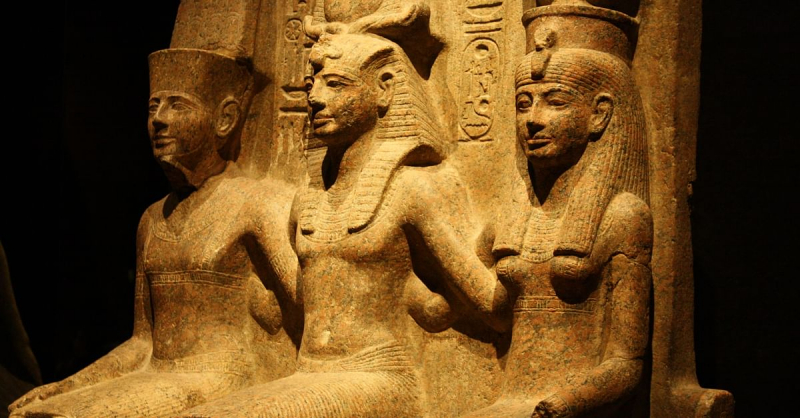
Photo: World History Encyclopedia - New Kingdom of Egypt Video: DW World History - Ancient Egypt - 12 - Rise of the New Kingdom -
The end of the Egyptian pharaohs is marked by the Third Intermediate Period, one of the most important events in Ancient Egypt, which began around 1078 BC. They were brought down by a number of factors, but the invasion of foreign troops like the Assyrians and Libyans was the most damaging.
Thebes' priesthood gradually grew in influence until they eventually controlled the southern region of the nation. The economy was significantly harmed by the power split, and the populace experienced food and water shortages.
Around 943 BC, the Libyans raided Egypt, which marked the beginning of the foreign monarchy's authority. The reunification of the northern and southern halves of Egypt was accomplished by one of the most illustrious Libyan rulers, Shoshenq I. The three successors of Shoshenq I enjoyed a peaceful existence that lasted over a century. However, after an Assyrian invasion in 853 BC, Egypt was divided into two parts: Lower Egypt was administered by Shoshenk III, while Middle and Upper Egypt was dominated by Takelot II and his allies.
The Assyrian army formed an alliance with nearby nations around 700 BC and occupied the whole Egyptian region. Assyrians began to rule the region and referred to themselves as Saite monarchs. Before Persian soldiers entered Egypt, their rule lasted for about a century.Video: AVP123 - Third Intermediate Period, Egypt, North Africa. 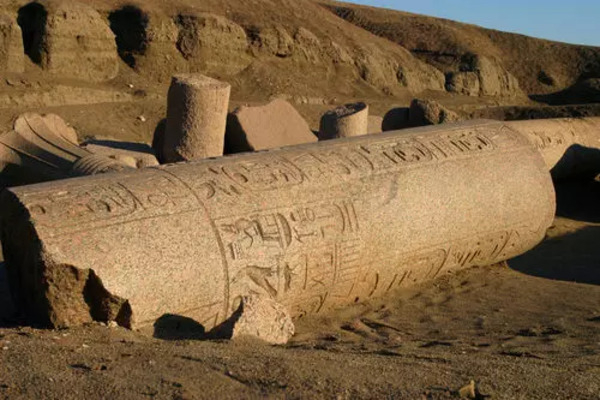
Photo: World History Encyclopedia Third Intermediate Period of Egypt -
Both the Persian and Nubian armies were successful in taking control of Egypt, where they ruled for several centuries. However, they were ignorant of the expansion of the Greeks and of Alexander the Great, who led them. In 332 BC, he came in Egypt. Alexander marched to Egypt after overthrowing the Persian ruler Darius to seize control of Syria and the Levant. Egypt was then a satrapy under the Persian Empire, held loosely under Persian rule ever since the end of the 7th century BC, when the Ancient Egyptian Empire began to fall. The Oracle of Amun at Siwa Oasis declared Alexander the new "lord of the cosmos" and a descendant of the Egyptian god Amun to solidify their reputation as liberators.
Alexander subjugated Egypt in 332 BC by fighting the Persians. He was well-liked by the Egyptians as a leader because he respected their nation and religion. He became so enamored with their way of life that he began to dress in their traditional garb and read many of their religious texts.Numerous areas were subjugated by Alexander, who even had cities named after him. He did the same in Egypt, redesignating Alexandria as the nation's new capital. He used the majority of the Egyptian riches to annex the remaining Persian Empire.
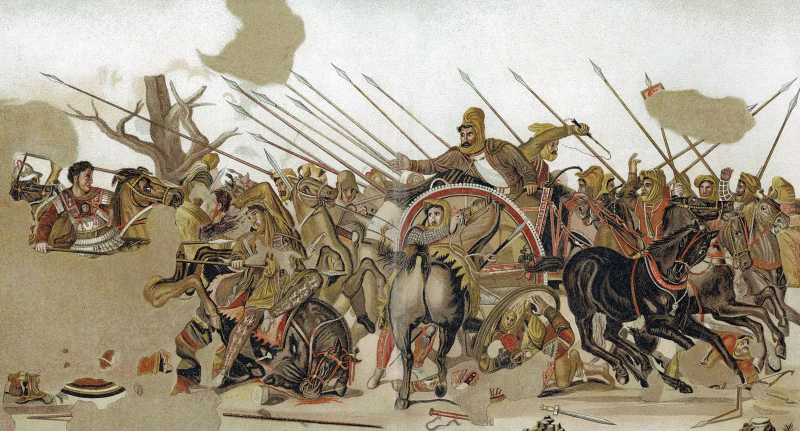
Photo: Timetoast - Timeline of the Conquests of Alexander the Great 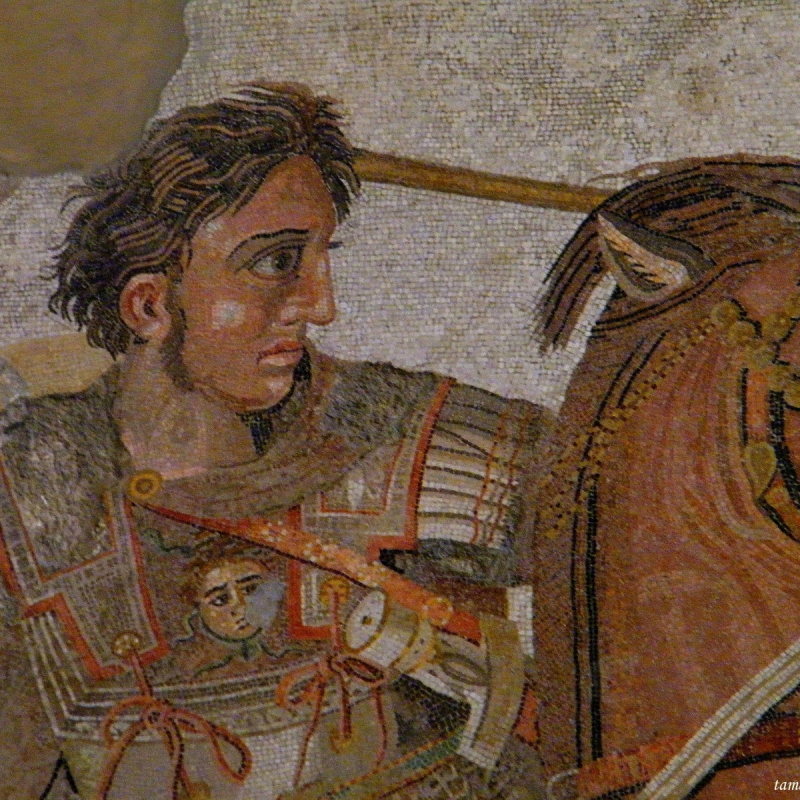
Photo: www.history.com - Alexander the Great










